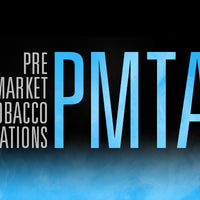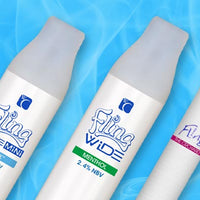In part 1 of our CASAA survey breakdown, we focused on the role electronic cigarettes have played in smoking cessation and how healthcare providers have managed to discuss the use of e-cigs with patients. Now let’s turn our focus to the importance of e-cig flavors and how strict regulations could affect the vaping industry.
CASAA Survey Provides Insights On E-Cig Flavoring and Regulations

With all of the concerns over the health and safety of electronic cigarettes, it is evident that vaping products must be regulated. But just how far should regulations go? It makes sense to place age restrictions to keep vaping products out of the hands of minors and it makes sense to regulate e-liquid products to ensure they do not contain dangerous chemicals. What doesn’t make sense is lumping vaping into the same category as smoking and enforcing a ban on all flavored e-liquids other than tobacco and menthol based on flawed research suggesting flavors target children. To further the point that e-cigs are not made for children, CASAA’s survey results indicate what the majority of vapers already know: adults like flavors, too.
Who Says Flavors Are For Kids?

The idea that e-cig flavors are targeted towards youth continues to be a highly debated topic. The theory is that bubble gum, candy and other sweet flavors are used to entice youth to take up vaping; however, it is clear that flavors play an important role for adult vapers as the survey results indicated:
- 83% preferred fruit or fruit beverage
- 76% preferred candy, soda or pastry
- 30% preferred spice or savory
- 19% preferred tobacco flavors
- 18% preferred menthol/mint flavors
- 12% preferred bitter flavors
With results like these, it’s hard to understand why vaping critics continue to claim that flavors are used to entice youth into vaping, and are still going as far as proposing the ban on all e-liquid flavors except regular tobacco and menthol. Why keep the two flavors that so closely resemble a habit that many e-cig users have fought to break? If anything, the naming of flavors seems to be more of an issue; therefore, e-liquid companies and retailers should take caution in flavor naming by avoiding such names as “Unicorn Milk” and instead stick with more sophisticated names that are indicative of the actual flavor.
Related: The Fallacious E-Liquid Flavor CLaim
How E-Cig Regulations Will Affect Vapers

The regulation of electronic cigarettes has been a hot topic for the last few years with local and state governments implementing their own regulations while awaiting the news of how e-cigs will be regulated at the federal level.
Currently, all 50 states have implemented age restrictions for the purchase of e-cig products, while indoor and outdoor vaping bans continue to hit the news across the country. One city even went as far as banning all flavored e-liquids.
In the meantime, the question of how e-cigs will be regulated at the federal level remains unanswered, thus causing a bit of fear of what’s in store for the vaping industry. For the series of questions regarding e-cig regulations, participants answered questions based on three different scenarios:
Scenario 1: If e-cigs were completely banned:
- 93% would buy vapor products from newly created black/gray markets or DIY
- 21% of former smokers and 50% who still smoke would resume or increase smoking
- 5% would quit using nicotine vapor products and tobacco products
- 4% would start using some other smoke-free tobacco/nicotine product (e.g. snus/smokeless tobacco; NRT) or would increase current use of such products
Scenario 2: If all e-cig products were banned except for a small variety of closed system cig-a-likes available in only tobacco and menthol flavors (survey included that these would be more expensive than current cig-a-likes):
- 1% said they would not be affected as they currently use tobacco or menthol cig-a-likes
- 4% would use cig-a-like products that could be sold legally
- 6% said they would quit using e-cigs and all tobacco/nicotine products
- 21% of people who had switched to vaping would start smoking again
- 46% of dual users said they’d increase smoking
- 4% said they would use some other smoke-free tobacco/nicotine product (e.g. snus/smokeless tobacco; NRT) or would increase current use of such products
- 91% said they would continue to use their preferred type of e-cigs and would obtain products from overseas or through a domestic black market, or would build their own systems
Scenario 3: If all types of e-cig devices would still be available but in tobacco or menthol flavors only:
- 4% said they would not be affected as they currently use tobacco or menthol flavors
- 10% would switch to tobacco or menthol flavors
- 5% would quit using e-cigs and all tobacco/nicotine products
- 14% of those who switched to vaping would start smoking again
- 35% of dual users would increase smoking
- 3% would start using some other smoke-free tobacco/nicotine product (e.g. snus/smokeless tobacco; NRT)
- 89% would continue using preferred e-cig flavors by obtaining from overseas or through a domestic black market, or by making their own flavored e-liquid
These results show just how detrimental strict regulations could be for public health and for the vaping industry. Strict regulations, such as the proposed grandfather date, could not only put 99% of the vaping industry out of business, but could also send vapers right back to smoking, which studies continue to prove is far more dangerous than vaping.
CASAA’s survey on e-cigs is of great importance to the vaping community as the results are based off of the largest target population to date and covers all areas of concern when it comes to electronic cigarettes. The survey provides useful information that should be presented to government organizations to petition strict e-cig regulations, including the success of e-cigs over FDA approved NRTs (nicotine replacement therapies), the importance of flavors, and how strict regulations could lead vapers back to smoking or result in a new black market.
As the war on vaping continues, members of the vaping community are encouraged to do what they can to protect the right to vape by participating in legit e-cig surveys and studies, and by keeping up with calls to action and contacting local representatives regarding overly strict regulations.






